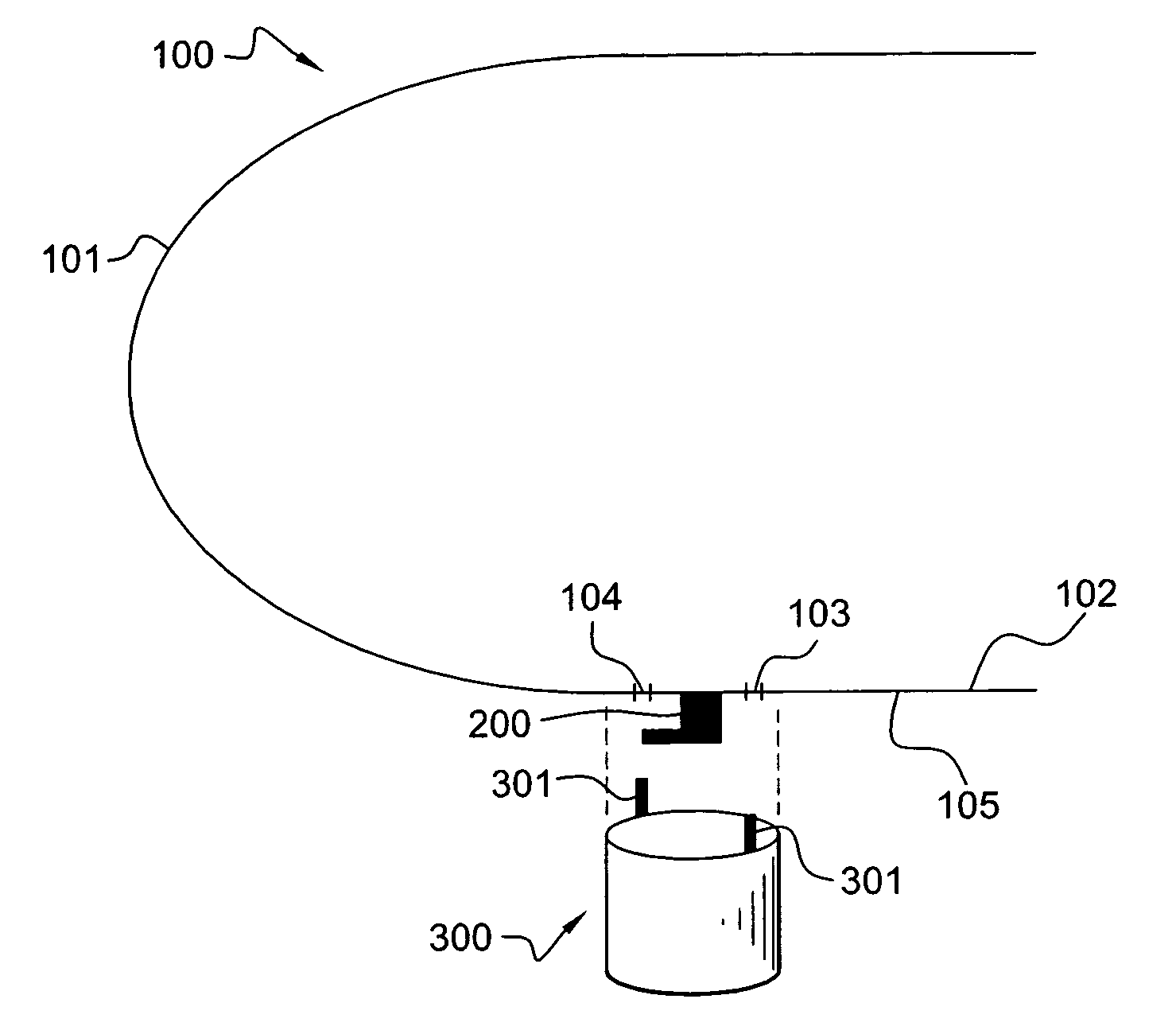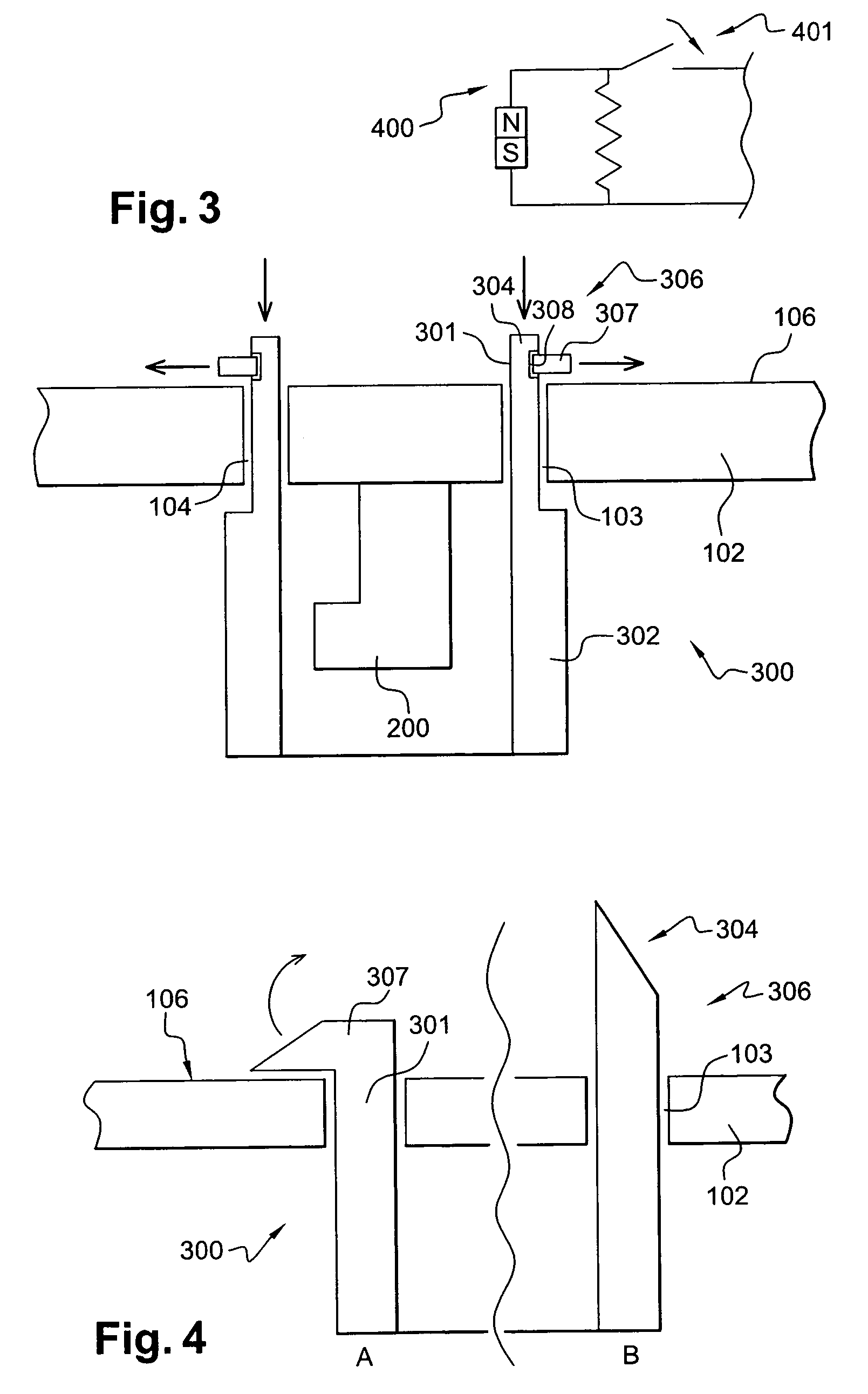Device for the protection of a probe joined to an external wall of an aircraft
a technology for aircraft and probes, applied in the direction of instruments, heat measurement, transportation and packaging, etc., can solve the problems of affecting the safety of the probe, the inability to measure parameters, and the risk of their melting on the prob
- Summary
- Abstract
- Description
- Claims
- Application Information
AI Technical Summary
Benefits of technology
Problems solved by technology
Method used
Image
Examples
Embodiment Construction
[0045]FIG. 1 is a diagrammatic view of a head 101 of an aircraft 100. A wall 102 of the aircraft 100 carries a probe 200 on an external face 105. The term “external face” is understood to mean the face located outside the aircraft 100. The wall 102 of the aircraft 100 is provided with two holes 103 and 104, on either side of the probe 200. The holes 103 and 104 are capable of receiving fastener means 301 of a device 300 for the protection of the probe 200.
[0046]FIG. 2 shows a more detailed review of the protection device 300. The protection device 300 has a body 302. The body 302 herein has a hollow cylindrical circular shape closed at one end. The probe 200 may be housed in the cylinder 302. The protection device 300 has two fastener means 306. The fastener means 306 are positioned on either side of the body 302. Each fastener means 306 has a through-hole unit 301. A bottom end 303 of the through-hole unit 301 is fixed to a wall 305 of the body 302 coming into contact with the exte...
PUM
| Property | Measurement | Unit |
|---|---|---|
| temperature | aaaaa | aaaaa |
| temperature | aaaaa | aaaaa |
| temperature | aaaaa | aaaaa |
Abstract
Description
Claims
Application Information
 Login to View More
Login to View More - R&D
- Intellectual Property
- Life Sciences
- Materials
- Tech Scout
- Unparalleled Data Quality
- Higher Quality Content
- 60% Fewer Hallucinations
Browse by: Latest US Patents, China's latest patents, Technical Efficacy Thesaurus, Application Domain, Technology Topic, Popular Technical Reports.
© 2025 PatSnap. All rights reserved.Legal|Privacy policy|Modern Slavery Act Transparency Statement|Sitemap|About US| Contact US: help@patsnap.com



